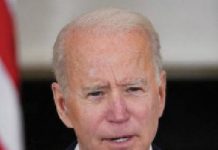 After recurrent electoral losses in many states including Delhi, the most challenging task for Bhartiya Janata Party (BJP) is to hold its fort in Uttar Pradesh. The road to Delhi goes from this most crucial northern state that will go to assembly elections in 2022 as a testing ground. Strategic failure in Delhi elections brought back the focus on politics of development and Yogi Adityanath-led BJP government adopted populist mask focusing youths, infrastructure, education amid sinking economy thriving on heavy barrowings of money and rising per capita debt of 22,442 on a common man in its budget for 2020-21 tabled before state assembly.
After recurrent electoral losses in many states including Delhi, the most challenging task for Bhartiya Janata Party (BJP) is to hold its fort in Uttar Pradesh. The road to Delhi goes from this most crucial northern state that will go to assembly elections in 2022 as a testing ground. Strategic failure in Delhi elections brought back the focus on politics of development and Yogi Adityanath-led BJP government adopted populist mask focusing youths, infrastructure, education amid sinking economy thriving on heavy barrowings of money and rising per capita debt of 22,442 on a common man in its budget for 2020-21 tabled before state assembly.
The saffron party aims at rosy results from its impetus to populist schemes in social, educational and infrastructural sectors. CM Yogi said that his government’s first budget had focused on the farm sector, the second on promoting infrastructure for industrial development, the third for women empowerment, and the focus of the fourth budget is on creation of opportunities of self-employment for the youths in view of vast potential of Uttar Pradesh.
The budget provided 250 crore for the promotion of the state micro, small and medium enterprises (MSME) under the flagship one district, one product (ODOP) project and 250 crore for the marriage of girls hailing from the poor families. He also announced ambitious projects to set up Atal Medical University in Lucknow and for modernisation of UP Police. The government is setting up new universities in Saharanpur, Azamgarh, and Aligarh.
The state has allocated more than 5,400 crore for infrastructure development of airport, metro and expressway projects. It include most prestigious Jewar International Airport (2,000 crore) which may revolutionise economic development because of its strategic location connecting eastern and western dedicated corridors, Ayodhya Airport (500 crore) besides a sum of 92.50 crore has also been provided for the other airports under the regional connectively scheme.The metro rail projects of Kanpur, Agra and Gorakhpur got 844 crore and 2000 crores to Ganga Expressway. The government also faces tough time to finance mega infrastructure projects like Purvanchal Expressway, Bundelkhand Expressway, Gorakhpur Link Expressway, linking of Meerut with Prayagraj (Allahabad) through Ganga Expressway. The rural road and highway projects under the state public works department (PWD) were provided with 7,400 crore apart from World Bank and Asian Development Bank (ADB) funded road projects.
The budget has allocated 300 crore and 210 crore for the socio-economic development in the backward regions of Purvanchal (Eastern UP) and Bundelkhand respectively. The state has allocated nearly 9,000 crore for different water projects, including canals, potable water, water conservation, irrigation etc.
The determined Chief Minister Yogi Adityanath committed to achieve $1 trillion economy by 2024 to top up the Prime Minister Narendra Modi’s resolve to take India to $5 trillion economy but economic reality of weak revenue receipt poses a serious challenge due to unsupportive ground realities. The debt burden is mounting and the total debt on it from different sources is likely to be over 5.16 trillion by the end of next fiscal 2020-21.
The budget size of 2020-21 at 5.12 trillion is a little less than the debt burden speaks itself about the fiscal infirmities to take up new developmental tasks involving major capital expenditure. This year’s budget is almost 7 per cent higher than the annual budget of current 2019-20 that was about 4.79 trillion.
The total debt of the state, however, came down from 29.6 per cent of State Gross Domestic Product (SGDP) in 2017-18 and estimated to be 28.8 per cent in 2020-21. With a debt burden of over 5.16 trillion, every resident of UP has a debt of 22,442 on their head. With a population touching 230 million, the state’s debt burden was hovering around 28 per cent to 30 per cent of the State Gross Domestic Product (GSDP).
Finance Minister Suresh Kumar Khanna while tabling the budget for 2020-21 in the Assembly on February 18, 2020, mentioned, “The debt per person in the state during the 2019-20 fiscal is estimated to be 20,702 as the total debt burden would be little over 4.76 trillion.” The total debt burden does not include borrowings from banks and financial institutions by PSUs like UP Power Corporation, UP Housing and Development Board and Urban Development authorities. The state government is the guarantor against the borrowings by the PSUs.
Of the total fresh borrowings by the state government during 2020-21, the maximum would be market borrowing at 32,346 crore, 18.1per cent of the total loans. The state also expecting loan of 11,815 crore from the Centre, 19,368 crore from financial institutions and 42,277 crore from power bonds.
The budget depicts total estimated receipts of the state at over five trillion, of which 33 per cent would come from state taxes, 30.4 per cent from state share in Central taxes and 14.4 per cent from Central assistance. It will also collect 13.1 per cent of revenue from public loans.
With a total expenditure of 5.12 trillion, the highest 37.1 per cent spend for payment of wages, pension and allowances to government employees and aided educational institutions and pension. The state will also spend a little over 16 per cent for repayment of loan, while 16.1 per cent spend on capital expenditure. The government will also pay 3.3 per cent of its expenditure on subsidy.
The economic slowdown has taken its toll on the state’s industrial growth and consequently collection of taxes which is further putting strains on its finances.UP collected about 80,000 crore in taxes during the first eight months (April-November) of 2019-20, aproximately 58 per cent of the target of over 1.40 trillion during the current fiscal. In the first six months of the current fiscal year the state collected just 56,000 crore just 36 per cent of the targeted 1.5-trillion revenue. Now the state government has targeted to enlarge the GST base of traders from mere 14 lakh to 50 lakh. The recurring shortfall in collection of its own tax revenue has further worsened the situation as it could result in heavy reduction of its share in central taxes.
The continuous shortfall in revenue and increasing annual burden of debt servicing on the government has put before very limited option of market borrowing that too is a very difficult proposition. The total debt burden on UP government by the end of March next will cross 5-trillion mark, which is almost likely to be same as the budget size of 2020-21. The annual burden of debt servicing on UP government is also likely to be over 1.5 trillion by the end of 2020-21.
The performance of power sector has been the biggest challenge beforeYogi Government. Despite the bailout package of UDAY (Ujjawala Discom Assurance Yojana) the losses of the UP Power Corporation continue to mount. The state government itself is the biggest defaulter, as its various departments owe over 15,000 crore to the power utility by the end of March 2019. The power generation in UP transmitted to 800-Kilometer away Delhi that sells it a lower tariff than Uttar Pradesh, as CM Arvind Kejriwal plugged in pilferage and wasteful expenditure. The situation is bad in state where power tariff has increased about 27 per cent from November 30, 2017 to September 1, 2019 but there is no improvement in losses and revenue collection of the power corporations.
The historic victory of AAP in Delhi on the plank of socio-economic development, freebies of power, water and city bus service to women and mixing populism with social welfare has revolutionized new trends of governance. The take away lessons for chief minister Yogi Adityanath and his team are loud and clear as new wind of change wants development and the agenda of polarizing on communal lines would not always be a success mantra. Therefore, pressure of performance on development front and creating jobs for youth would be major area of challenge for Yogi Adityanath amid poor fiscal resources at hand.
letters@tehelka.com











